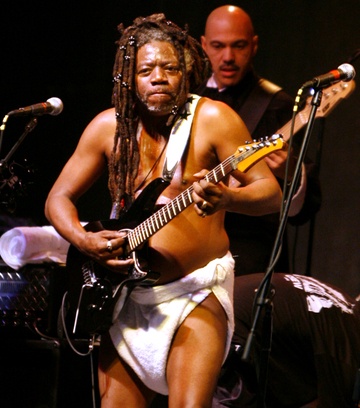Guitar Funk Grooves: Unleash the Magic!
Ready to take your guitar skills to the next level? Join our exclusive Funk Guitar Course today! Unleash the magic of James Brown, Prince, and John Scofield in your playing. Don’t miss out on this incredible opportunity! Call now to secure your spot and claim your FREE assessment!

Funk Guitar Course: Enhancing Groove Creation and Improvisational Abilities
In our funk guitar lessons and course, you will learn how to effectively use tension, muted rhythms, repetition, and chordal licks (hammer-ons/pull-offs) to your advantage.
You will also learn how to effectively use syncopation, triplets, and diatonic harmony in the process of creating grooves.
The rhythmic foundation you build in this course will help further your improvisational abilities in all group settings, as well as strengthen your solo playing.
By the end of the 10-week funk guitar lessons, you will be able to create melodic and harmonic grooves in relation to established chords.
Ignite Your Groove and Elevate Your Guitar Skills!
Our funk guitar course opens new dimensions of musical expression, seamlessly integrating the essence of funk into your playing. In these lessons, you’ll harness tension, muted rhythms, repetition, and chordal licks to your advantage.
Time Signatures, Groove Techniques, and Musical Analysis
- You will learn to play in 4/4, 3/4, 6/8, 12/8, 5/4, and 7/4 time signatures.
- You will learn to add tension and release to your grooves.
- You will learn specific left and right-hand techniques to enhance your rhythmic capabilities.
- You will learn to incorporate effects such as compression, wah-wah, and delay to stimulate your rhythmic creativity.
- We will analyze works by James Brown, Cream, Miles Davis, Prince, Herbie Hancock, and John Scofield.
Chord Mastery
Chords are your groove tools. Learn to master them.
- Chords: Open and closed position major and minor triads, major and minor 7th chords, and added tensions.
- Creating grooves with movable chords.
- Creating grooves with dominant 7 chords.
- Creating grooves combining chords, chordal substitutions, and triads.
- Defining chords through melody and using this melody to create grooves in high and low registers.
What are you waiting for?
Call me for a Free Assessment !
Improve Your Accompaniment Skills
At the Creative Guitar School in Sydney, I offer a selection of courses and masterclasses geared towards achieving your personal goals as a musician or artist.
In a band, the guitar can either play the melody or accompany it. When we accompany a melody, we provide support to convey its meaning to the audience.
Within this accompaniment, we define the groove and harmony of the song, reinforcing the melody’s purpose through rhythmic and harmonic support.
Learn to Make Melodies with Chords
In my guitar classes in Sydney and at my Online Guitar School students learn how to play the chord, or series of chords, of a song as a very identifiable guitar accompaniment. Students will learn to create a secondary melody, a background melody that we play while the main melody of the song is played. I will provide you with rhythmic and chordal tools to create your own spectacular grooves on the guitar. Together we will expand your chord knowledge and construct original rhythm guitar grooves using major triads, minor triads and all types of 7th chords.
The Background Line
This background melodic line, the groove, will sound good on its own, it will define the harmony and also the groove of the song, but it will not overpower the melody. Students will learn to define a harmonic progression by melodies and also, at a later stage, learn how to harmonise this accompaniment if needed with diatonic triads, 7th chords and other chords that help create movement or cadence towards the strong parts of the created background line.